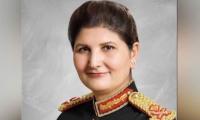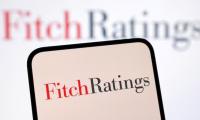LAHORE: History stands witness that after 2003 nearly every regime ran into an economic mess, especially in the last 15 months of its tenure and the ensuing outcry forced them to switch to appeasing mode, but this populism failed to win any of them a second term.
Successive governments in Pakistan have not learnt their lesson from the experience of previous regimes and still think public appeasing measures in the last year to 15 months of their government would win the votes in the next election.
The PML-Q government formed after 2002 elections maintained high growth during its tenure. The inflation and interest rates were low in its first four years. Things got out of hand in the last. There was an acute wheat flour shortage, the food prices suddenly spiraled up with inflation increasing but remained in single-digit. The interest rates almost doubled but were still in single digit. The government in its last year was hesitant to take action against wheat hoarders. The wheat stock available with the government was exported before the arrival of the new crop. The global meltdown was round the corner. The Q-government was defeated in the elections despite maintaining sustained growth during its entire tenure. Food inflation was the primary reason for its ouster.
Then came a coalition government led by PPP. It assumed power in March 2008. The economic turmoil left by the previous (Q-regime) was compounded by the global recession as well as record increase in global crude oil rates. The inflation and interest rates during the first two years of PPP-led government was in double digits. The growth rate plummeted in the first two years. The economy started improving in its last three years. In the last year the growth rate was a little less than 4 percent. This inflation and interest rates remained high but were on a declining path. This regime was mainly dependent on borrowed money for its expenditures. The development expenditure was curtailed. The government managed to provide full autonomy to the provinces with cooperation and consent of all political parties. The corruption level increased as was evident from our low rating by the Transparency International in the last year of the PPP led regime. The party was almost wiped out in most of Pakistan except rural Sindh.
Later on the power went to the PML-N. The new government gradually brought down the inflation as well as the interest rates and the growth started increasing every year during its tenure. But despite almost doubling the tax revenue the PML-N government could not control the expenses and its borrowing from banks and international donors was higher than that of the previous regime. Then 18 months before the completion of its tenure its prime minister was disqualified by the Supreme Court and the party lost control over the government. Still the economy was not in bad shape. Realising that the PML-N would not be allowed to come into power after the elections, its new finance minister presented a public appeasing budget in which the tax rates on salaried class were slashed by 50 percent and many other tax concessions were given. This was unrealistic and bound to create financial difficulties for anyone that succeeded them.
The PTI emerged as the largest party after elections and formed a coalition government. The government started haunting opposing politicians, bureaucrats, and businessmen in the name of accountability. The process was so biased that even the most corrupt managed to gain public sympathy. The businessmen stopped investing and the bureaucrats performing. No significant recovery was made in this process in the past 42 months. This government could not increase revenues in its first two years. The growth rate in the second year went into negative for the first time in our history mainly because of Covid-19. Thereafter economy started performing and revenues increasing appreciably.
Their major failure was inability to control inflation. Inflation was in double-digits in the first two years and still hovers around 9-12 percent in the 18 months that followed. The interest rates peaked to historic highs in the first 18 months of this government and came down to single digit after the pandemic hit the economy. The interest rates currently are a shade less than 10 percent. Our policy rates are 2-3 times higher than India, Bangladesh, and China. The inflation is similarly higher. The rising crude oil prices were a major blow to this government. To pacify the electorate, the government reduced petroleum rates by Rs10/litre and power tariff by Rs5/unit for four months. The concession would be financed through borrowing that was already the highest by any past government in Pakistan.
The next elections are scheduled for November next year. Will this government be the first in our history to get reelected?
Renowned Pakistani singers Ali Zafar and Natasha Baig perform during PSL 2025 anthem X Dekho. — Screengrab via...
Chairperson of Oil and Gas Development Company Zafar Masud. —OGDCL website/FileISLAMABAD: Chairperson of Oil and...
Lights illuminate chairs at the Robert and Judi Newman Center for the Performing Arts before a performance in Denver,...
The State Bank of Pakistan building in Karachi.—SBP website/FileKARACHI: The State Bank of Pakistan on Monday...
Traders are seen in front of a screen with trading figures in red at Thailand Stock Exchange building in Bangkok,...
Federal Minister for Planning, Development and Special Initiative Ahsan Iqbal addressing a press conference. —...







